The Email Playbook for Winning Back Abandoned Carts
Master cart recovery with this guide on email strategies, tools, and tactics to boost e-commerce sales.
Category
Published on
Picture this: a customer wanders into your virtual store, picks up items they love, adds them to their cart, and then... Poof! Vanishes without a trace. This scenario, known as “cart abandonment,” is all too common in the e-commerce world: More than 70% of carts never complete checkout.
Still, every abandoned cart is a potential sale that you can reclaim. And the bridge between lost opportunities and successful conversions? A well-crafted email strategy.
With over 333 billion emails sent daily, you’ll need to do more than reach customers’ inboxes. You need to strike the right chord with recipients by delivering the right message at the right time. And having the right tools in your arsenal—like MessageBird—can make all the difference in doing so.
With Bird, you’ll be ready to:
Integrate your e-commerce platform with your email system, so that you’re able to contact customers who’ve abandoned their carts
Craft compelling, personalized emails that resonate with your audience and nudge them toward completing their purchase
Automate email campaigns at scale, keeping communication with customers timely, targeted, and relevant
Each abandoned cart is a conversation you can reignite and a relationship that you can deepen. With the right strategy, tools, and approach, you can transform these missed opportunities into successful conversions.
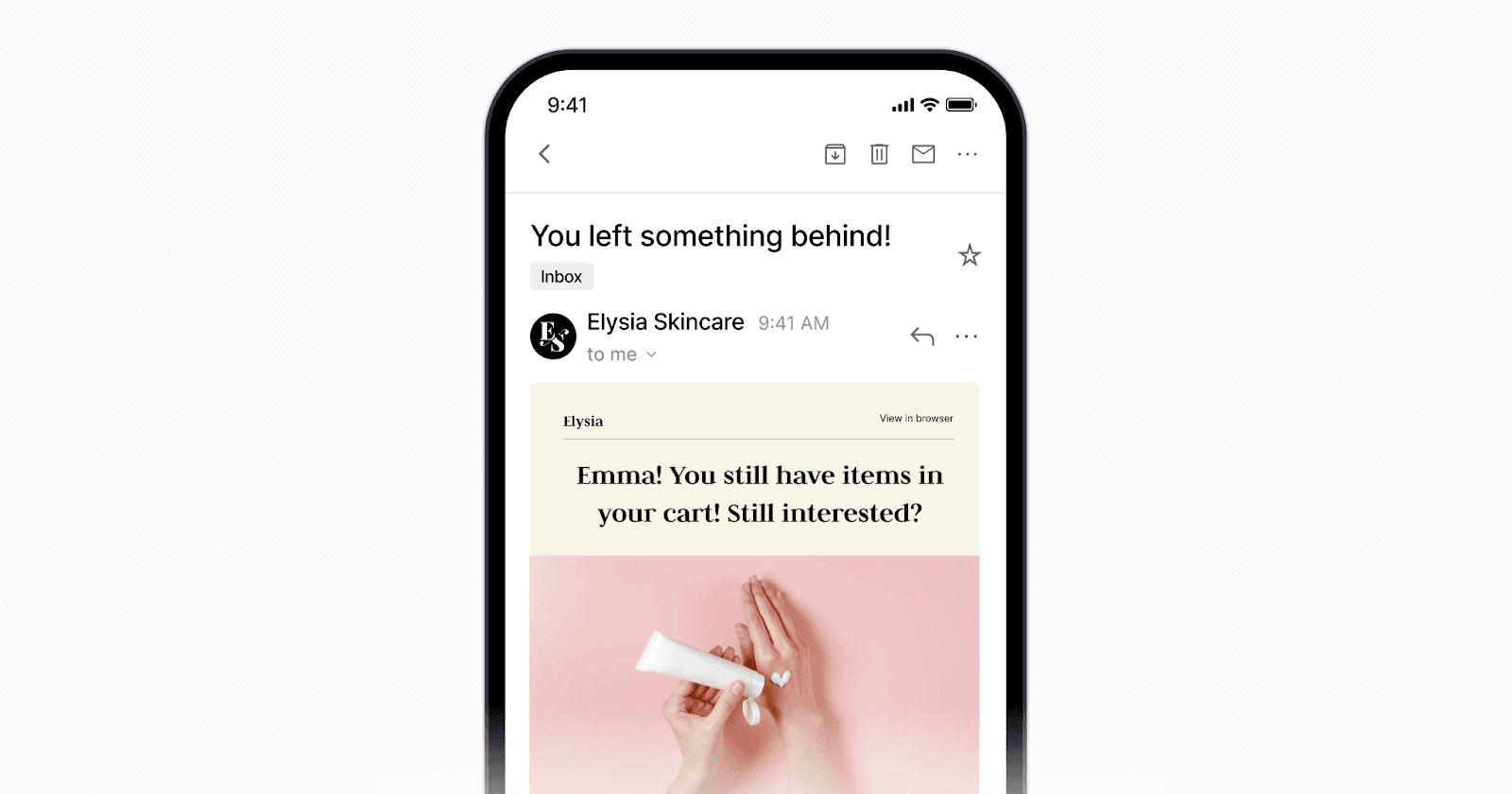
Understanding Cart Abandonment
Why care about abandoned carts?
The impact of cart abandonment extends beyond just lost sales. It represents a significant leakage in potential revenue for e-commerce businesses and a tangible financial ripple effect.
Consider: Each abandoned cart is a lost potential revenue. When aggregated, especially considering how many carts are abandoned on average, these lost sales can represent a substantial portion of your business's income.
You’ve also already wasted valuable time and money in attracting customers to your site when they abandon their carts. The ripple effect can extend to the potential lifetime value of customers, especially if abandonment is due to a negative shopping experience.
It’s not just lost sales, but lost opportunities.
Why does cart abandonment happen?
Understanding why shoppers tend to get cold feet can help you plan your cart recovery tactics. So, let’s take a walk in the average shopper’s shoes.
You’ve filled up your cart and are ready to check out. Then you run into one of the following scenarios:
Unexpected Costs: You’re deterred by additional charges like shipping, taxes, and fees that all add up.
Complex Checkout Process: Why are there so many steps? You’re frustrated by how lengthy and complicated the checkout process is.
Browsing Behavior: You’re just browsing, and bookmarking items with no immediate intent to buy. Simply put, you’re just curious.
Payment Security Concerns: This payment processor looks sketchy. You’re concerned about online fraud because you don’t trust the payment gateway with your credit card information.
Delivery Too Slow: You need to buy a present for your daughter’s birthday next week, but it won’t arrive for two weeks. What’s the point?
Website Issues: The website keeps glitching, loading too slowly, or isn’t mobile-friendly. Your shopping experience isn’t smooth.
So now that you’ve walked a mile in their shoes, how do you fix this for your customers?
The next step is addressing the specific pain points and hesitations that led to cart abandonment so that you can win back those carts ASAP.
Common Cart Recovery Pitfalls And How To Fix Them
Avoid premature send by strategically timing your emails
Timing matters when sending cart recovery emails. If you send it too early, you might interrupt a customer who is still considering their purchase or simply navigating away from their cart for a second. Too late, and they might have already lost interest or found what they were looking for elsewhere.
Allow some breathing room after the customer abandons their cart before sending the first email. The window of opportunity varies for each business, but a few hours is often effective in giving customers space while still keeping your brand and products fresh in their minds.
If the first email doesn’t convert, plan a follow-up sequence. Time these subsequent emails based on customer behavior and typical buying cycles, with a tool like Flows. For example, you could send the second email a day later, and a final reminder three days later.
Leverage data from your e-commerce platform and email analytics to understand optimal timing for your audience. Adjust your email timing based on customer behavior to find that ultimate sweet spot between promptness and patience that leads to higher conversion rates.

Capitalize on mobile audiences by optimizing for mobile devices
Mobile devices comprise the largest share of email views, at 41% of all email opens, ahead of desktop at 39%. That said, neglecting to optimize for mobile devices is an easy mistake to make when designing cart recovery emails.
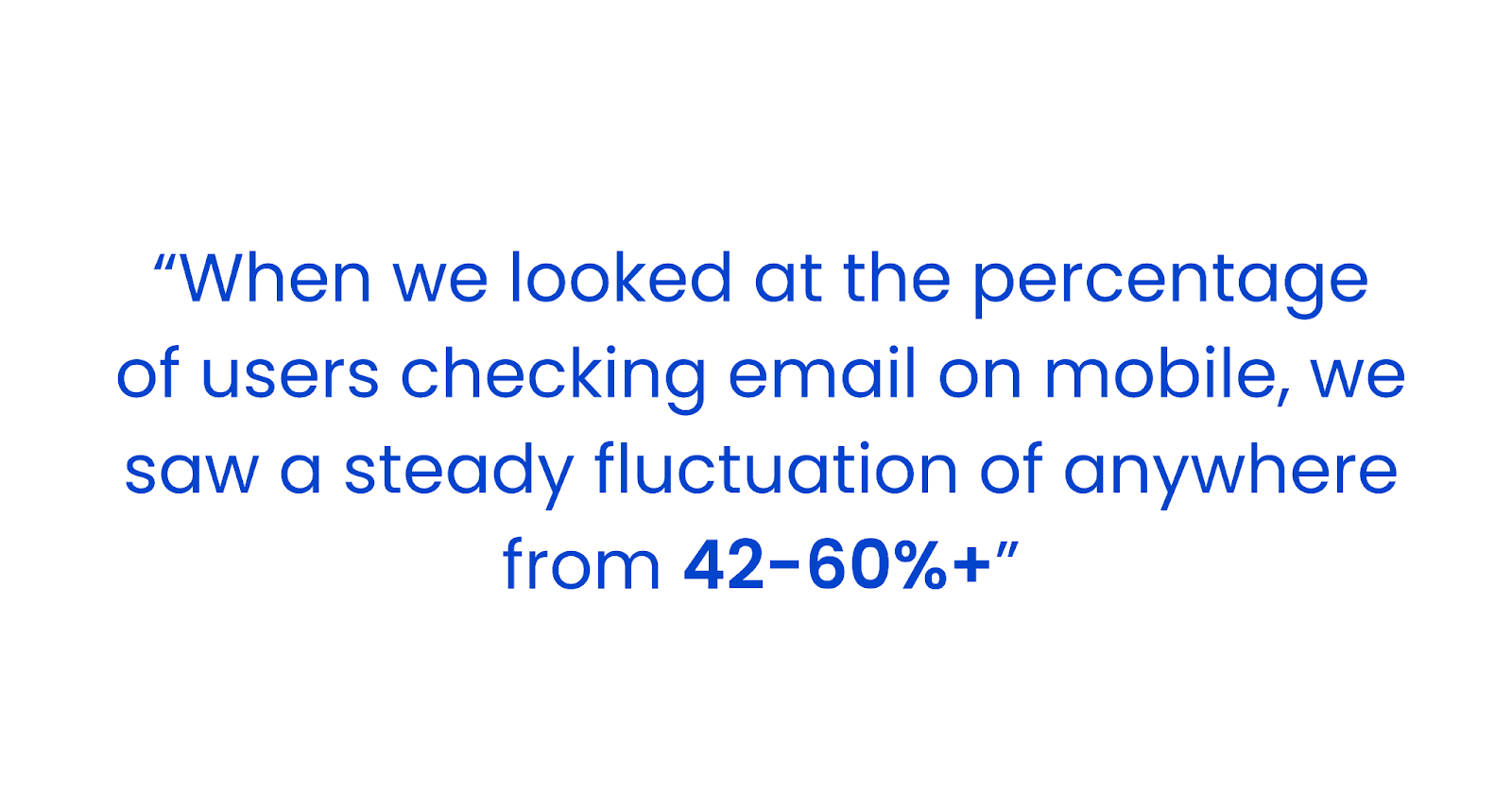
When emails aren’t mobile-friendly, they suffer from formatting issues, difficult-to-read text, and unclickable links, leading to a poor customer experience. This can frustrate your mobile customers, leading them to churn from their carts again—or even unsubscribe from receiving your emails altogether.
Instead, embrace mobile optimization for better communication with your customers. Design emails with a responsive layout, which means they’ll look good and be easy to navigate on screens of all sizes. Keep text concise and legible, with CTA buttons and links large enough to easily tappable on mobile devices. Compress images and size them properly for quick loading on mobile devices, and use alt text to convey the message even if the images don’t load.
Finally, make sure to test your cart recovery emails across mobile devices and email clients before sending them out. This will help you identify and fix any readability or layout issues before your emails go live.
Extend your reach beyond emails
While email is a powerful tool for cart recovery, an email-only approach might miss reaching customers who are more responsive to other forms of communication, such as SMS or messaging apps like WhatsApp.
Incorporate text messages into your cart recovery strategy. SMS can be an immediate and direct way to reach customers. For instance, send a short text message reminding a customer of their abandoned cart, perhaps with a special offer, to prompt quick action. SMS is especially effective for time-sensitive offers or urgent communications, given that most people tend to read text messages more frequently and quickly than email.
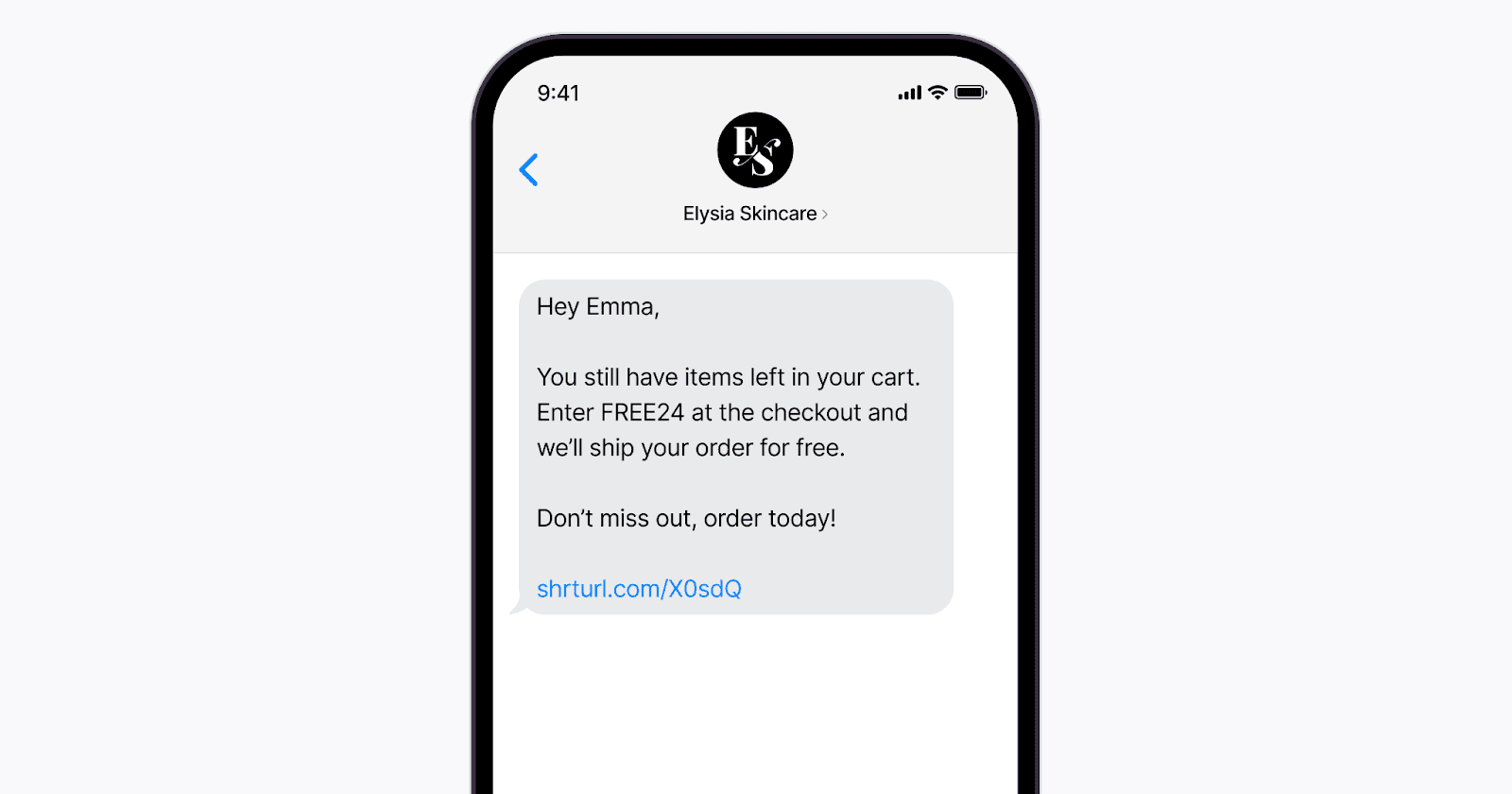
Or, with its massive user base and broad reach, WhatsApp is an excellent platform for sending personalized, interactive messages. It can be particularly effective in regions like Europe and Asia, where WhatsApp usage is high. You can send reminders about abandoned carts, answer customer inquiries in real-time, and even use rich media like emojis, GIFs, and videos to enhance your messages.
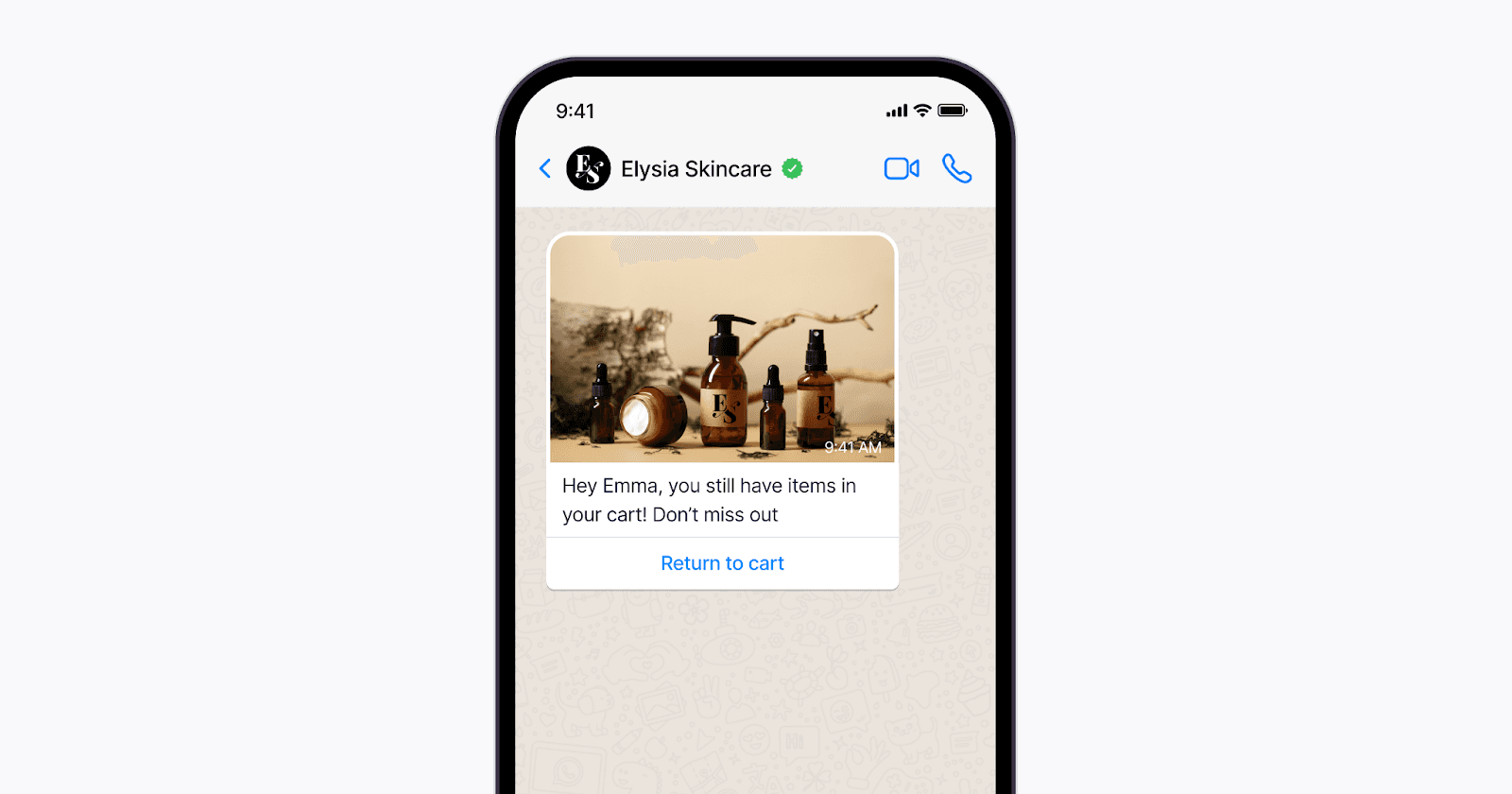
Essential best practices for abandoned cart email campaigns
Decide how many emails to send
Deciding whether to send a single email or a series should be based on unique performance metrics and customer behaviors. A single email may suffice for occasional abandoners or for products with a short decision-making process. In contrast, a series might be more effective for higher-value items or customers who frequently abandon carts.
Analyze past campaign data to understand which approach yields better open rates, click-throughs, and ultimately, conversions. The goal is to effectively engage the customer with timely messages, without overwhelming them.
Craft email sequences that resonate
Cart recovery emails should be more convincing and strategic than just a blast of emails all at once. In Flows, you can automate a more effective email sequence where each email serves a clear purpose, moving the customer closer to completing their purchase.
Start with a gentle reminder about the items left in the cart, then progress to offering incentives like discounts or free shipping. Incorporate product recommendations or reviews to further engage the customer. Tailoring these sequences to audience behavior – based on past purchase history or browsing patterns – can significantly increase their effectiveness.
The best part? Flows keep your email sequences automatically moving along in the background, nurturing your customer relationships for you, hands-free.
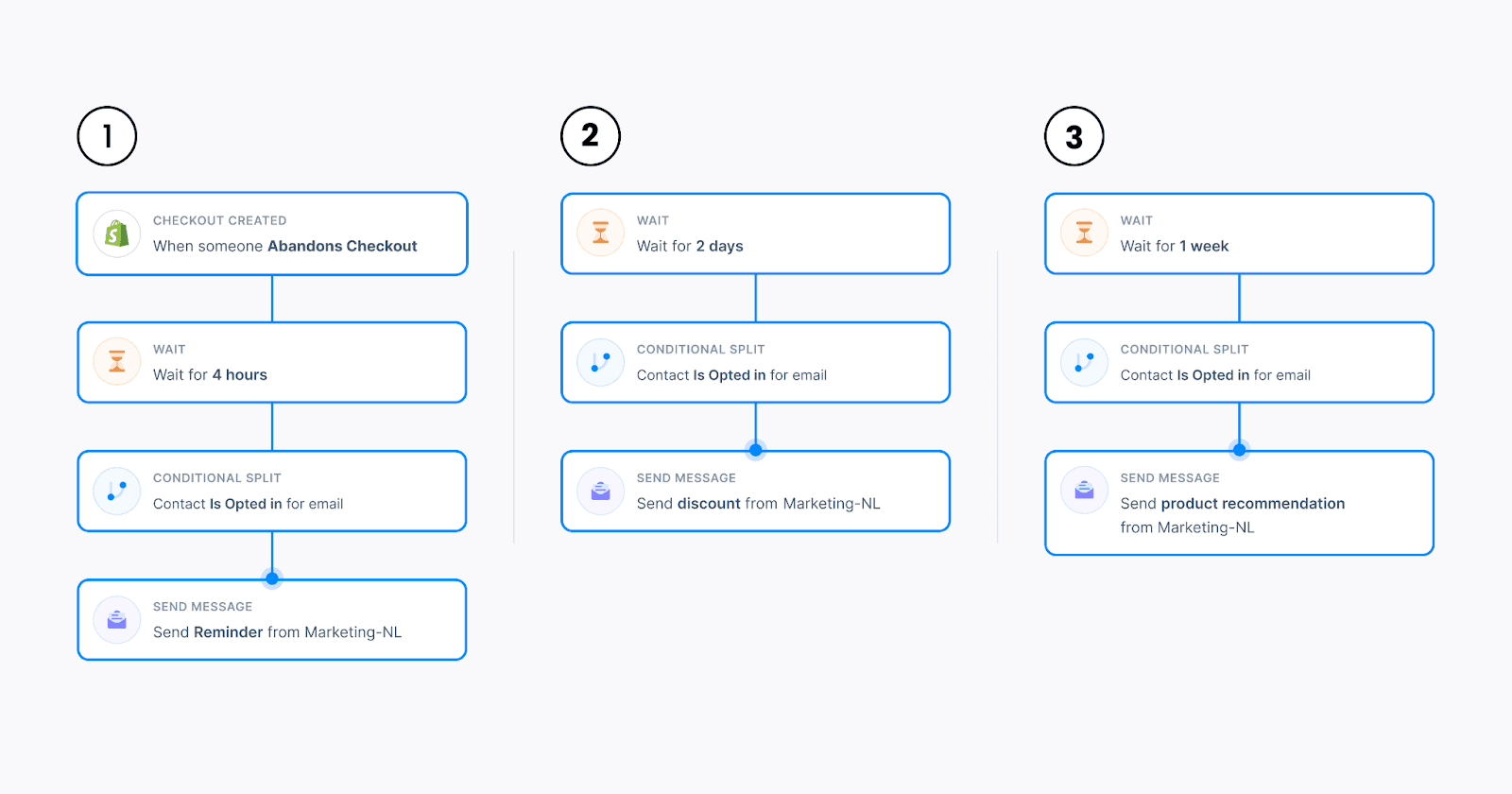
Grab their attention with a compelling subject line
The subject line is your first—and sometimes only—opportunity to grab the customer’s attention. It’s the crucial first impression that can make or break your cart recovery efforts. Here are some tips on how to catch your customers’ eyes at first glance:
Personalize: Personalized subject lines, such as those that include the customer’s name or the specific items they left behind, can significantly increase open rates. It creates a connection and reminds the customer of their initial interest in the product.
Example: “John, your dream jacket is still waiting for you!”
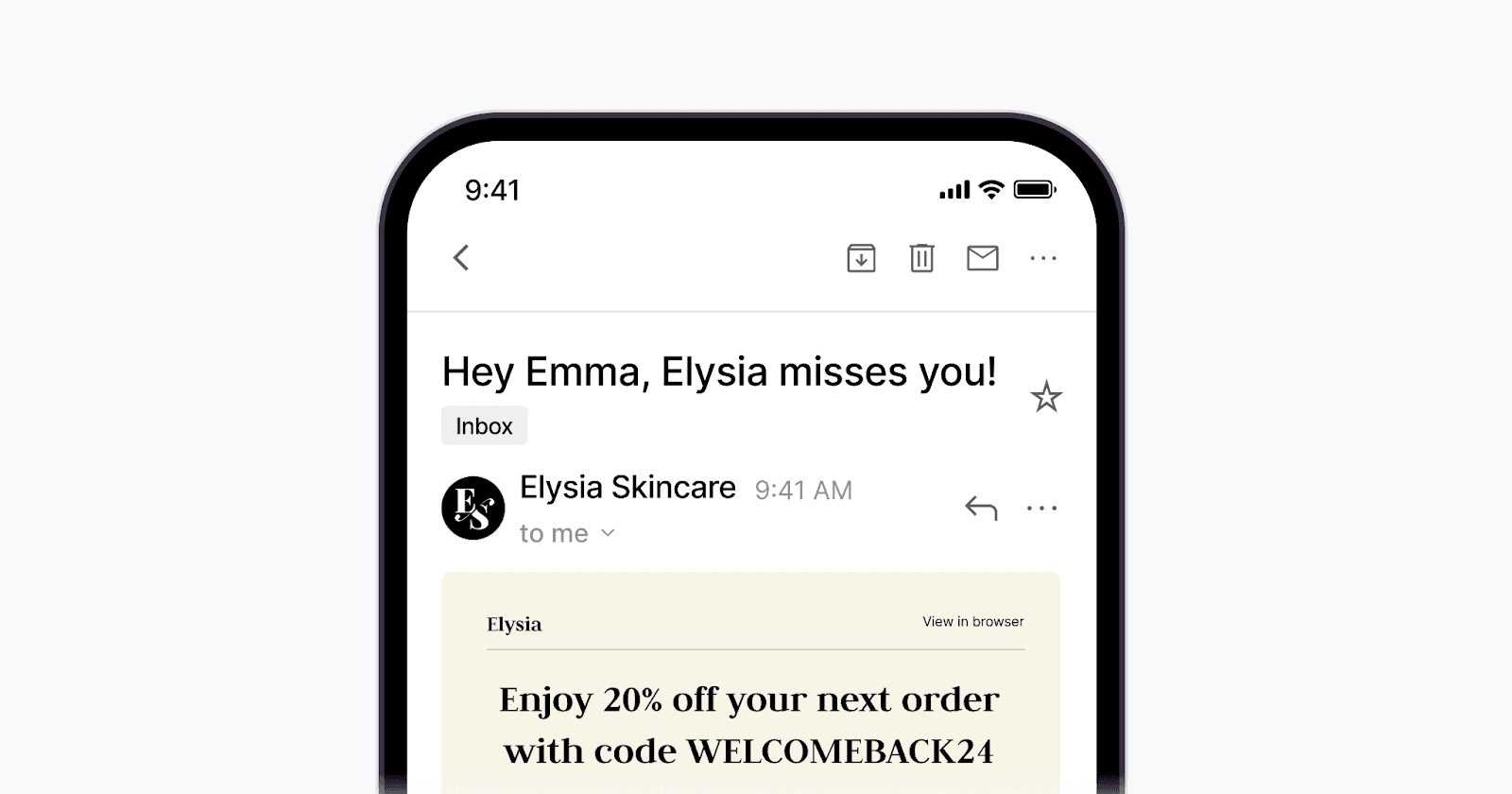
Create urgency and curiosity: Prompt immediate action or spark your recipient’s curiosity. By doing so, you pique the customer’s interest and entice them to revisit their cart now rather than later.
Example: “Last chance!” “Hurry, your cart is about to expire!” or “Did you forget something?”Keep it concise: Short and sweet is the name of the email subject line game. Lengthy subject lines both lose the reader’s interest quickly and risk being cut off in inboxes, especially on mobile devices. Aim for 50 to 60 characters to keep your subject line easily digestible and visible.
Example: “Your cart misses you - Grab it before it’s gone!” (47 characters)
Test and iterate
When it comes to recovering abandoned carts through email, adopting a “'test, learn, and adapt” approach is critical for success. The effectiveness of your email campaigns isn't just a matter of crafting the perfect message once—it's about continually refining and optimizing your strategy based on actual performance data. Testing and iterating your emails allow you to understand precisely what resonates with your customers, leading to higher open rates, click-through rates, and conversion rates over time.
Use A/B testing to refine your approach, changing one variable at a time—the subject line, the email copy, the timing of the send, and the call to action. Experiment with varying degrees of personalization, email lengths, call-to-action formats, and more. Don’t hesitate to adjust your strategy based on what the data tells you.
Stay true to your brand voice
Consistency in branding is vital in all your emails, including cart recovery emails. Whether your brand voice is friendly, professional, or quirky, convey it clearly throughout every aspect of your abandoned cart emails, from the copy to the design.
Use a tone and language that should be instantly recognizable to customers as unique yours, reflecting your brand’s personality. Remember, your brand voice is a tool for connecting with customers on an emotional level. Even in a cart recovery email, the way you communicate can evoke feelings of trust, excitement, or urgency in your customers.
The voice used in your recovery emails should match your brand voice across all your communication channels, including your website, social media, and customer service. Inconsistencies can confuse customers and dilute your brand identity.
You can use customizable templates Bird to infuse your brand voice in every email, applying a consistent style and tone to all your marketing materials.
4 Advanced Cart Recovery Techniques
1. Leverage the power of social proof
Social proof is a powerful influencer in consumer decision-making. In fact, 66% of consumers said that positive user reviews are the most significant factor in moving them to make a purchase. Integrating social proof elements in your recovery emails can significantly boost trust and encourage customers to complete their purchases.
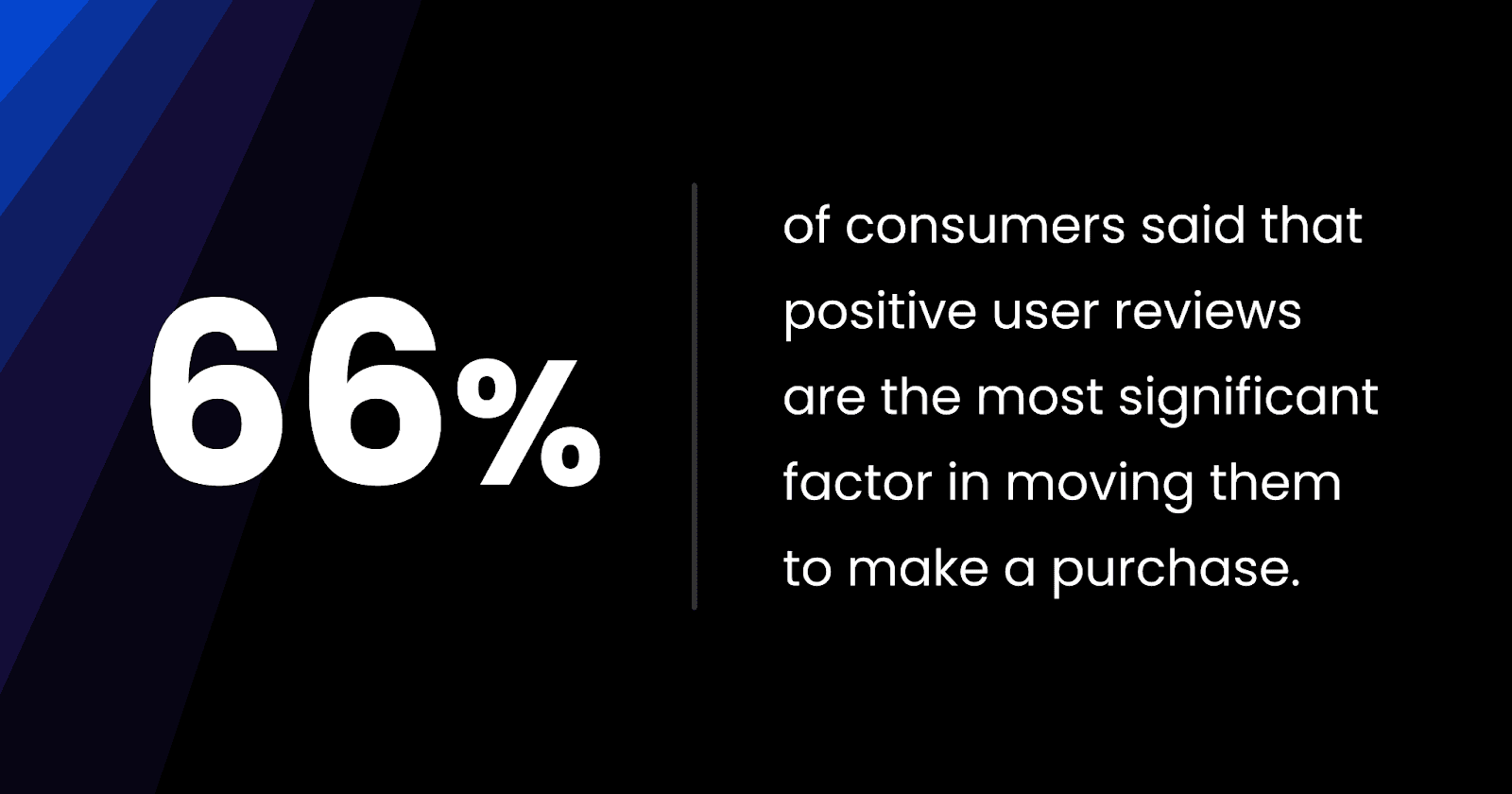
Include product ratings and reviews in your emails to reassure customers of their choice. Find real 5-star reviews on your product listings and share them with shoppers to sway them to one side of the fence. Positive testimonials can influence undecided shoppers by demonstrating satisfaction from others.
You can also include user-generated content (UGC) such as photos, videos and GIFs of other customers using the product, or posts shared on social media. This can create a sense of community and reliability, as UGC typically comes off as more genuine than statements directly from the brand itself.
2. Offer incentives to entice customers to return
Incentives like discounts or free shipping can play a pivotal role in convincing customers to complete their purchases. These kinds of incentives increase the perceived value of your offerings, causing shoppers to give your business a second chance.
While both incentives reduce the financial barrier to checkout, you have to strike a balance between direct price reductions and value-added services like free shipping. Consider how each offer affects your profit margins, but also consider customer preferences. Some customers might see free shipping as more valuable than a discount. Others might favor a price reduction to justify the purchase. Use A/B testing and analyze your email metrics to determine which offers are more likely to convert abandoned carts.
Regardless of what incentives you provide, create a sense of urgency with limited-time offers to sway customers to hit that “Checkout” button faster.
3. Perfect your Call to Action
The Call to Action (CTA) in your emails is more than just a button or a line of text—it's the critical link that guides potential customers back to completing their abandoned purchases. Here's how to perfect your CTA for maximum impact:
Clarity: Make it crystal clear what your customer should do, exactly, e.g. “Return to Cart” or “Complete Your Purchase”
Urgency: Give your customers a compelling reason to act soon with phrases like, “Don’t Lose Your 20% Discount” or “Your Cart Expires Soon!” that prompt immediate action.
Visual contrast: Your CTA should visually pop out from the rest of the email, whether by using contrasting colors or being a larger size. Your customers shouldn’t need to hunt to find the CTA.
Strategic placement: Put your CTA in an eye-catching position, ideally, above the fold and again at the end of the email for repeated exposure.
Follow-through: Whatever your CTA promises to the customer, the landing page it links to should deliver—whether that’s applying a discount, or simply bringing up the items that were in their cart.
4. Segment your audience for more targeted success
Email segmentation contributes to successful cart recovery. By dividing your audience into distinct groups based on their behaviors and characteristics, you can tailor your messaging for maximum relevance and impact.
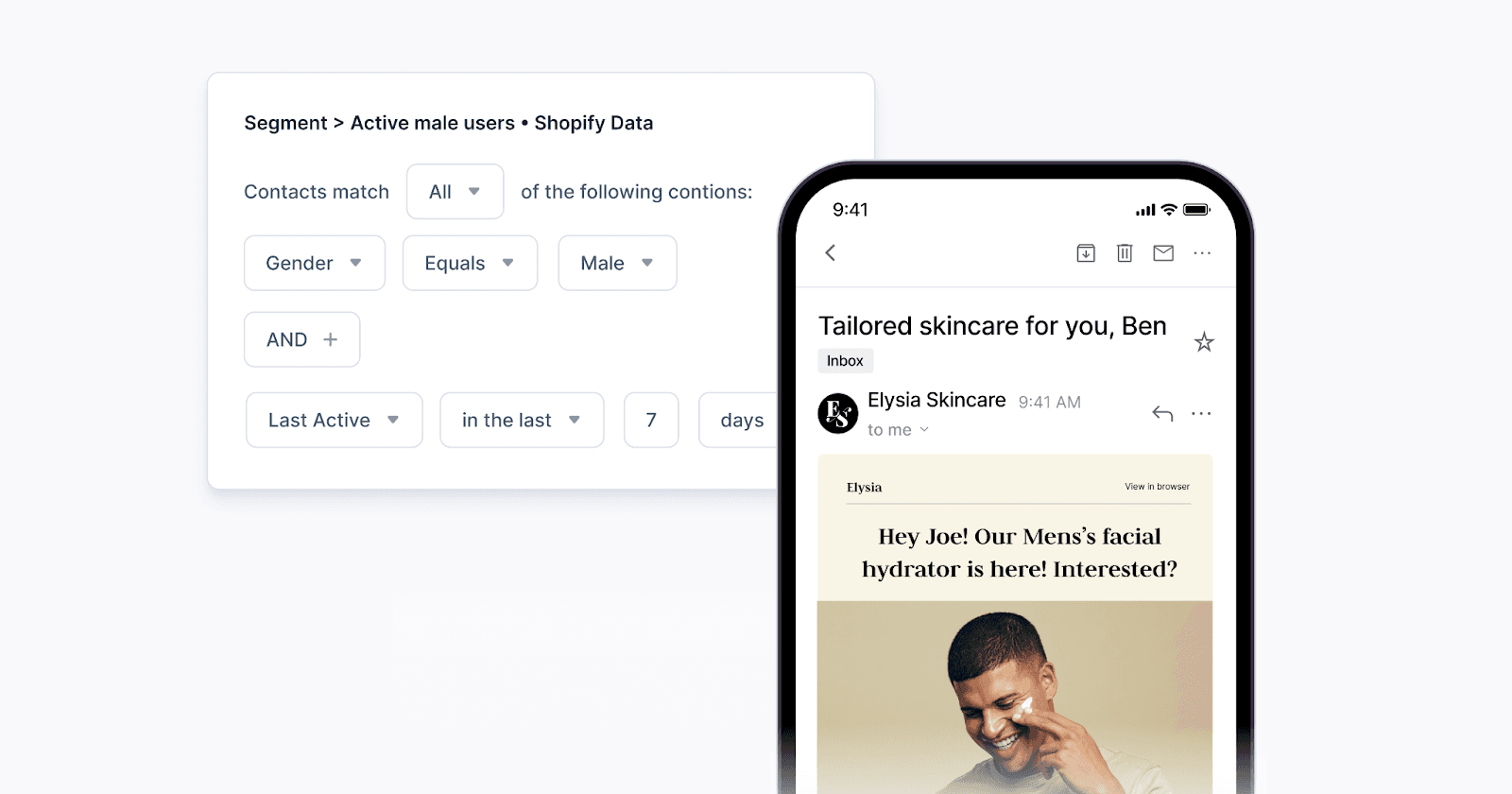
By connecting your e-commerce storefront to your email list with Connectors, you can segment your audience based on behavior like purchase history, cart size, and product preferences. Tailoring your approach to each segment increases the relevance and effectiveness of your recovery efforts. For example, a high-value cart might warrant a more aggressive or strategic recovery strategy.
You can also filter out frequent cart abandoners to avoid spamming and increase your overall cart recovery email engagement rates. Over-messaging by sending an email every time they abandon their cart can increase the likelihood of unsubscribes or being marked as spam.
Keep a close eye on open rates, click-through rates, and conversion rates for your segmented cart recovery emails. These metrics will inform you about what’s working and what’s not, allowing for continuous optimization. Don’t be afraid to test and iterate within segments, for example, by varying the timing of emails, the type of incentives offered, or the messaging used.
Turn lost sales into lasting connections
As we close this playbook on tackling cart abandonment, remember that every uncompleted purchase is a hidden gem for you to unearth. Cart abandonment is not something to fear, but rather an invitation to deepen your understanding of customers. By adopting a proactive and strategic approach, you can convert these moments of hesitation into meaningful customer experiences and recaptured sales.
Harness the innovative capabilities of Bird to craft a nuanced abandoned cart recovery strategy. Our platform is your ally in creating a seamless, engaging, and responsive experience that resonates with your customers at every step.
Ready to see Bird in action?
